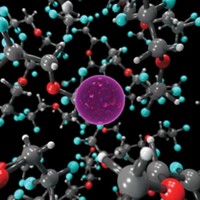Advertisement
Grab your lab coat. Let's get started
Welcome!
Welcome!
Create an account below to get 6 C&EN articles per month, receive newsletters and more - all free.
It seems this is your first time logging in online. Please enter the following information to continue.
As an ACS member you automatically get access to this site. All we need is few more details to create your reading experience.
Not you? Sign in with a different account.
Not you? Sign in with a different account.
ERROR 1
ERROR 1
ERROR 2
ERROR 2
ERROR 2
ERROR 2
ERROR 2
Password and Confirm password must match.
If you have an ACS member number, please enter it here so we can link this account to your membership. (optional)
ERROR 2
ACS values your privacy. By submitting your information, you are gaining access to C&EN and subscribing to our weekly newsletter. We use the information you provide to make your reading experience better, and we will never sell your data to third party members.
ACS Meeting News
Porous polymers transport lithium ions efficiently
Custom-made membranes may lead to safe, long-lasting, high-voltage lithium batteries
by Mitch Jacoby
April 13, 2021
| A version of this story appeared in
Volume 99, Issue 14

To select the best tool for a delicate job, it may be helpful to test several similar tools to see which one works best. Taking that approach with molecule-sized tools, researchers made and evaluated a library of related but chemically diverse porous polymers in search of a membrane for high-voltage lithium batteries. Their top candidate is a polymer that efficiently shuttles Li ions through its channels and may solve problems that have kept high-voltage, high-capacity rechargeable lithium batteries that outperform today’s variety from reaching markets.
On Friday at ACS Spring 2021, a meeting of the American Chemical Society, Brett A. Helms of Lawrence Berkeley National Laboratory described a study in which he and his coworkers prepared several catechol-based monomers and used them to generate a series of related microporous polymers. These kinds of polymers, which can be made and applied inexpensively, contain molecule-sized channels and pores and have been used for gas storage and other applications.
Speaking in a session organized by the Division of Polymeric Materials Science and Engineering, Helms reported that the group tailor-made more than 30 polymers that vary widely in molecular weight and surface area and contain pores ranging in width from roughly 5 to 25 Å. The team designed the polymers such that their channels were lined with differing numbers of functional groups containing nitrogen and oxygen atoms, which can serve as Li-ion coordination sites.
Using computational and experimental methods, the team evaluated the polymers’ ionic conductivities and other properties that control their ability to transport lithium ions, a central requirement of all lithium-based electrochemical devices. The aim was to find the best candidate to use as a membrane that separates the anode and electrolyte solution in batteries featuring a metallic lithium electrode.
Li-metal batteries have greater charge capacity and run at higher voltage than ubiquitous Li-ion batteries, which feature electrodes that combine lithium with the oxides of cobalt, nickel, and other metals. Despite the electrical advantages of Li-metal batteries, battery makers use mixed metal oxide electrodes for safety reasons: repeated charging can cause a Li-metal battery to form needle-like dendrites that can short-circuit the battery and cause fires. Some researchers have tried mitigating the problems with Li-metal batteries by using diamond films or fire-retardant electrolytes.
The Berkeley group found that one of its polymers worked particularly well as a membrane in Li-metal batteries. Dubbed PIM13, the polymer exhibits higher ionic conductivity and transports lithium ions via a pore-to-pore hopping mechanism more efficiently than other polymers in the library and reference membranes. Helms reported that unlike reference batteries, ones featuring PIM13 membranes suppressed dendrite growth and worked well for more than 400 charging cycles (Nature 2021, DOI: 10.1038/s41586-021-03377-7).
“This is a wonderful combination of experimental polymer synthesis, detailed data analysis, and state-of-the-art modeling,” said Neil B. McKeown of the University of Edinburgh, a specialist in porous polymers. Noting the study reveals new insights into the mechanism of Li transport though polymer membranes, McKeown added “the membranes and the methodologies pioneered in this work will be important for future battery development.”





Join the conversation
Contact the reporter
Submit a Letter to the Editor for publication
Engage with us on Twitter